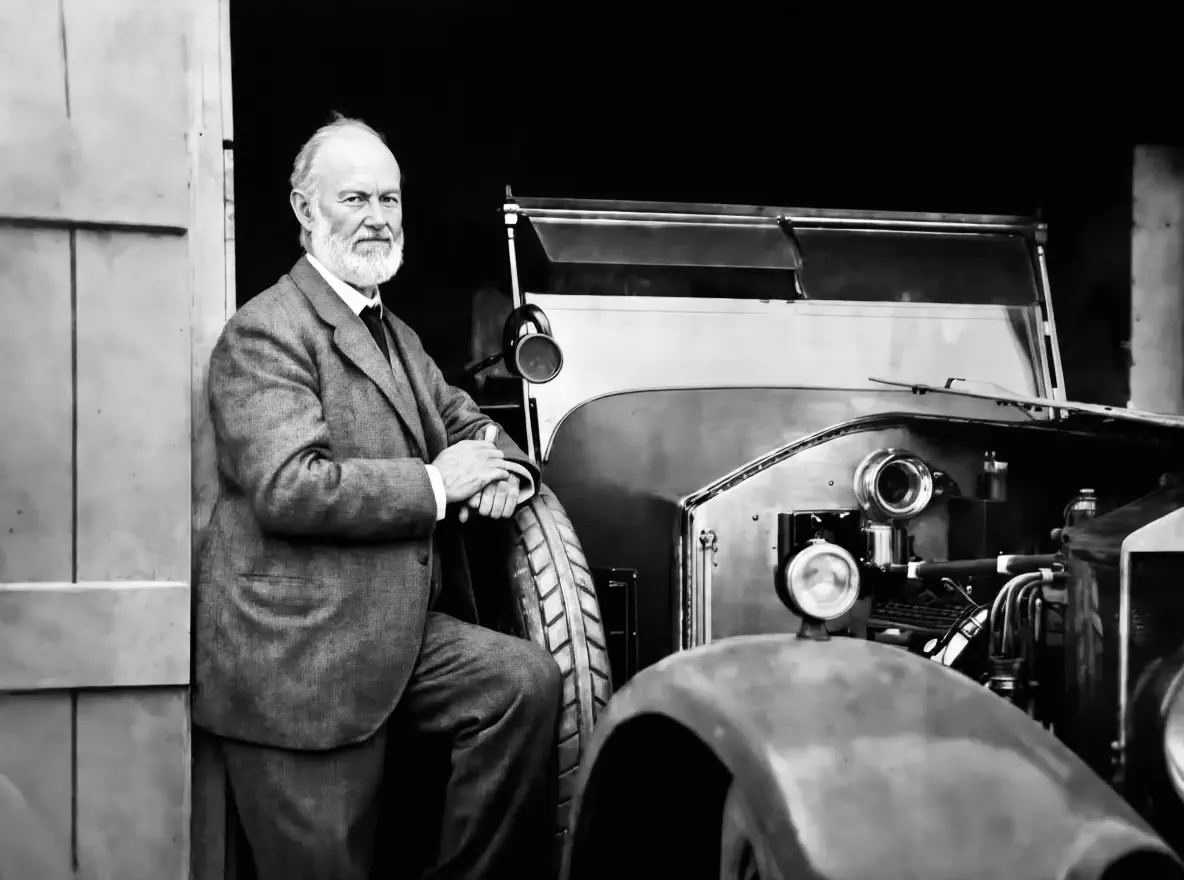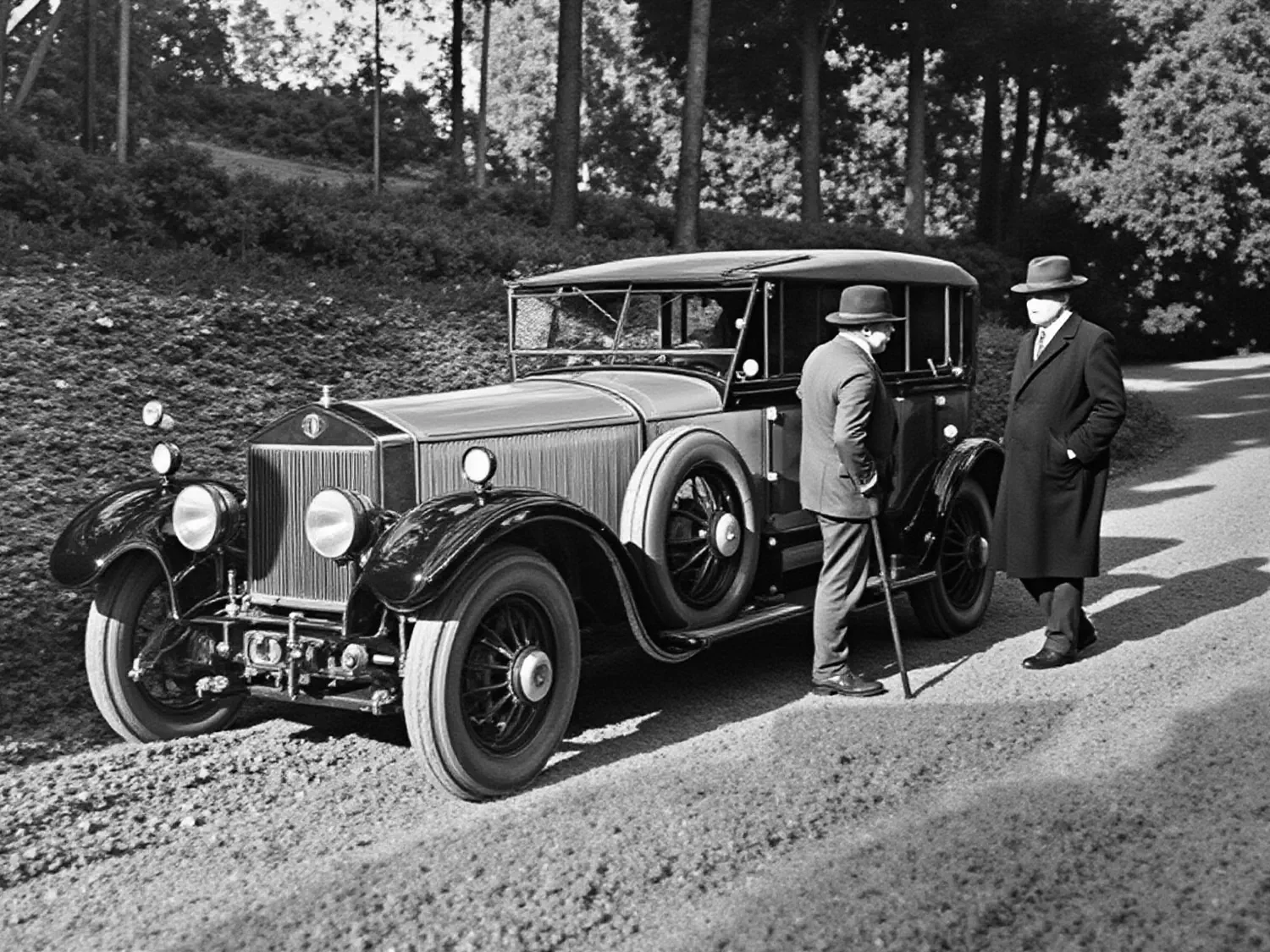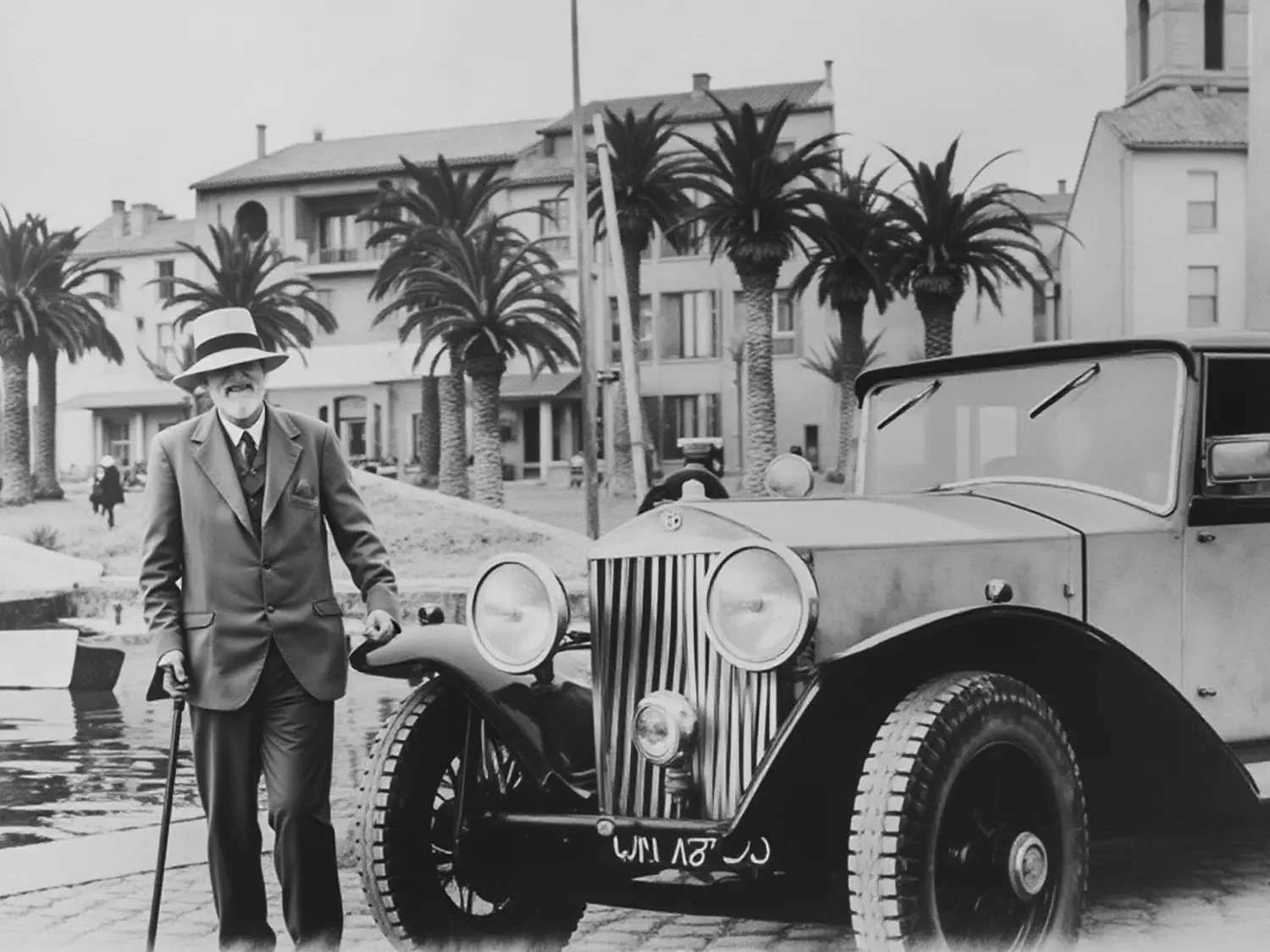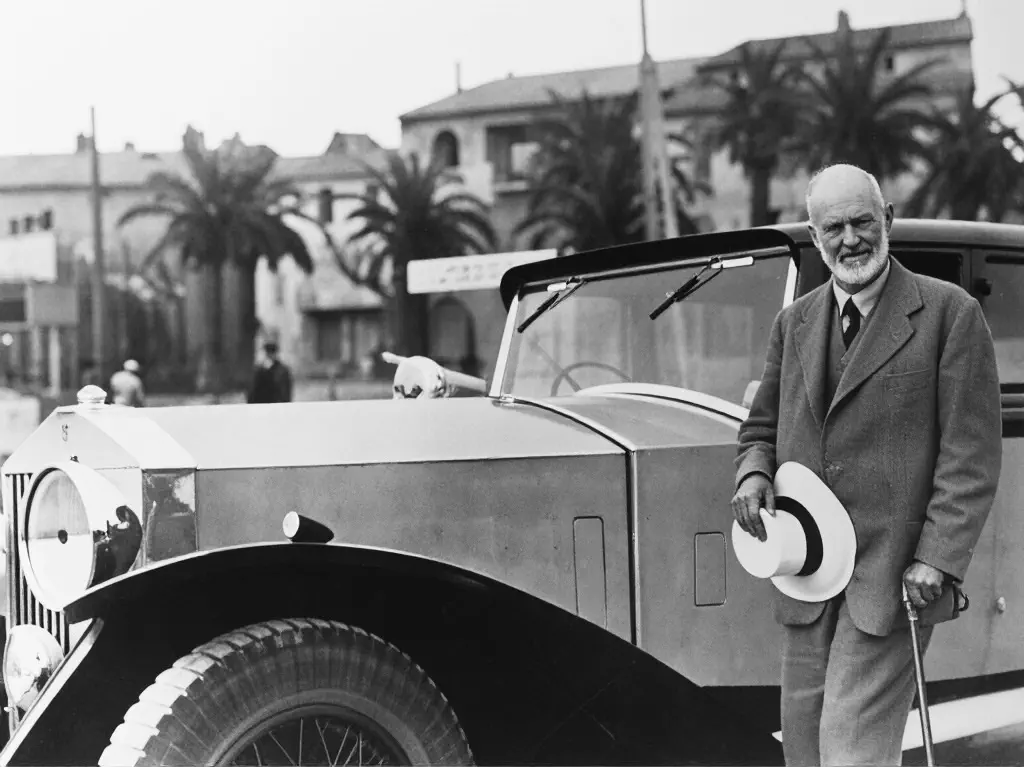Henry Royce: From Poorhouse to 301 Patents

Henry Royce had one year of formal schooling. By the time he died in 1933, he'd filed 301 patents, been made a baronet for services to British aviation, and created engines that would help win the Second World War. He'd also become the only engineer ever commemorated with a memorial window in Westminster Abbey. The journey from selling newspapers on London streets at age nine to designing the Merlin engine involved no privileged connections, no wealthy family support, and no university education. It involved working eighteen-hour days in a Manchester workshop where he cooked meals in an enamelling oven, sleeping on a camp bed, and inspecting every component personally until his standards bordered on the pathological. Royce tested prospective household staff by watching them boil potatoes. He once sacked a factory worker for using a broom incorrectly. He could assess engineering components by eye alone and was never wrong. The British have always loved their eccentrics, particularly the self-made ones who turn poverty into triumph through sheer bloody-mindedness. Royce was eccentric, self-made, and bloody-minded in equal measure. He was also completely incapable of switching off, which eventually killed him.
The Poorhouse Origins
Frederick Henry Royce was born in Alwalton near Peterborough on 27 March 1863, the youngest of five children to a miller who couldn't mill. When the family flour business collapsed, they fled to London, where his father found work in a Southwark mill. Then in 1872, when Royce was nine, his father died of Hodgkin's disease in a Greenwich poorhouse. Years later, Royce described him as "unsteady but clever, someone lacking the determination to apply himself single-mindedly to a task." The assessment was devastating precisely because young Henry had already decided to become its opposite.
With one year of schooling behind him, Royce sold newspapers and delivered telegrams. At fourteen, his great-aunt Catherine scraped together £20 annually to fund an apprenticeship at Great Northern Railway's Peterborough works. Royce lodged with another apprentice's family and continued delivering newspapers to pay his keep, studying English and mathematics in evening classes. When his aunt's money ran out in 1880, he walked from Peterborough to Leeds looking for work, found nothing, and returned to London, where he bluffed his way into the Electric Light and Power Company as an electrical tester despite possessing zero practical experience. The bluff worked because he learned faster than anyone could discover he was winging it. By nineteen, he was chief electrical engineer for the Lancashire Maxim-Weston Electric Company in Liverpool, responsible for the city's first electric street lighting.
The Workshop Where They Cooked in an Oven
When that firm collapsed into receivership in 1884, Royce didn't wait for rescue. Aged twenty-one, he partnered with Ernest Claremont to found F. H. Royce and Company in a Manchester workshop. Royce contributed £20 in savings, Claremont added £50. They made electric doorbells and light fittings, sleeping on camp beds in the workshop and cooking their meals in the enamelling oven. This arrangement would eventually destroy both men's digestive systems. Claremont later attributed his lifelong stomach troubles to this period, noting that heating food in an oven designed for baking enamel coatings onto metal wasn't brilliant dietary planning. Royce didn't care. He was too busy inspecting every component personally, refining every process until it couldn't be improved.
The business grew through the 1890s, graduating to dynamos and electric cranes. By 1899, they'd registered as Royce Ltd witha public share flotation. Royce married Minnie Punt, his partner's sister, in 1893 and moved into a semi-detached house in Moss Side. The marriage was loveless from the start. Both Punt sisters feared physical intimacy and pregnancy, and Royce's obsession with work left little room for anything else. One suspects the arrangement suited everyone reasonably well. By 1903, he was wealthy enough to buy a house in Knutsford and could afford to buy a proper motor car. He chose a two-cylinder Decauville, one of the finest cars available. The popular story claims he found it so poorly made that he vowed to build something better. The truth was that he bought excellence specifically to understand how it worked, then spent months dismantling it in his workshop.
The Aristocrat and the Street Vendor
By April 1904, Royce had built his first 10hp car. He built two more, giving one to Claremont (who initially had a horse-drawn Hansom cab follow behind in case of breakdown, which rather undermined the point) and selling another to company director Henry Edmunds. Edmunds happened to know Charles Stewart Rolls, an aristocratic Cambridge engineer running a London dealership selling French imports. Edmunds arranged a meeting at Manchester's Midland Hotel on 4 May 1904. Rolls was everything Royce wasn't: third son of Lord Llangattock, educated at Eton and Cambridge, a land speed record holder who'd earned the nickname 'Dirty Rolls' at university for loving engines. When they met, Rolls declared he'd found the greatest engineer in the world and agreed to sell every car Royce could make. By March 1906, they'd formalised Rolls-Royce Limited. A self-taught street vendor and an aristocratic playboy creating the ultimate symbol of British luxury.
In 1906, managing director Claude Johnson persuaded Royce to concentrate all development on one model: the 40/50hp. One silver-painted example caught everyone's attention, and Johnson christened it the Silver Ghost. When Autocar declared it 'the best car in the world' in 1907, Johnson adopted the phrase as the company slogan. Journalists demonstrated you could balance a penny on the chassis at 1,600 rpm without it falling. The company moved to Derby in 1908, into premises designed by Royce himself down to the smallest detail.
The Nurse Who Replaced His Wife
Then in July 1910, Charles Rolls killed himself flying a Wright Flyer at Bournemouth. He was thirty-two, Britain's first powered aircraft fatality. Royce's health, already compromised by decades of overwork and appalling eating habits, collapsed completely. In 1911 he suffered catastrophic digestive failure. London doctors diagnosed bowel cancer, operated, and gave him three months to live. Claude Johnson hired a nurse named Ethel Aubin to manage his recovery. She managed rather more than that. She took complete control of his life.
Johnson arranged for Royce and Aubin to convalesce in Norfolk, then travel through France and Italy to Egypt. In spring, they reached Le Canadel on the Côte d'Azur. Royce loved the location, and Johnson bought him land to build Villa Mimosa. In 1912, Royce returned briefly to England with his wife and her niece, but the arrangement was miserable. He departed for France with Aubin, suffered a recurrence of intestinal problems, and was rushed back to London in a converted Rolls-Royce ambulance. Surgeons performed what was reportedly Britain's first colostomy operation. Aubin never left his side, sleeping on a camp bed in his hospital room. The marriage ended in 1912, though they never divorced. Royce continued supporting Minnie financially, but Aubin had replaced her in every practical sense.
The Remote Perfectionist
From 1912 onwards, Royce ran Rolls-Royce from Villa Mimosa in winter and Elmstead in West Wittering in summer, banned from visiting Derby due to his health. Small design teams at each location translated his ideas into drawings for the main office. Engineers and draughtsmen made pilgrimages to present their work, a journey that must have felt rather like visiting a remote oracle who might reject six months of work because a line thickness wasn't quite right. His mantra to design staff was simple: "Rub out, alter, improve, refine." Perfection was a moving target that must always be pursued.
War and Racing
World War One shifted Rolls-Royce into aero engines. Royce designed the 20-litre Eagle in 1915, of which 4,681 were made. The Eagle powered Alcock and Brown's first transatlantic crossing in 1919. From the Eagle came the Buzzard, and from the Buzzard came the R engine for the Schneider Trophy. Between 1927 and 1931, Royce's team transformed 825 horsepower into 2,783 horsepower. The R-powered Supermarine S.6B won the Trophy outright for Britain on 13 September 1931 at 340.08mph. Seventeen days later it achieved 407.5mph, becoming the first aircraft to exceed 400mph. Reginald Mitchell designed those winning seaplanes. His next project would be the Spitfire.
The Final Years
By 1931, Royce's health was deteriorating badly. He spent increasing periods in bed at Elmstead. In late 1932, knowing the RAF would need more powerful engines, he began work on what Rolls-Royce called the PV-12. Private Venture, because they were funding it themselves without government assistance.
He died on 22 April 1933, aged seventy. His funeral followed his instructions: no mourners, no flowers. Only two people attended his cremation. His will left Elmstead and two-fifths of his estate to Aubin, acknowledging "my nurse for over 20 years, and who has done so much to prolong my life." Minnie received another two-fifths. His ashes were initially buried beneath his statue at Derby, then moved in 1937 to Alwalton parish church..
Six months after his death, in October 1933, the PV-12 engine completed its first test. It became the Rolls-Royce Merlin, the 27-litre V12 that powered the Hurricane and Spitfire through the Battle of Britain, the Lancaster bomber, and the P-51 Mustang. Almost 150,000 were built. Royce had once signed the RAF Calshot visitors' book simply as "F.H. Royce, Mechanic." His engines helped win a war he never saw coming.
Henry Royce built the best cars in the world and designed engines that won the most important war of the 20th century. He achieved this by sacrificing his health, his marriage, and any semblance of normal life.
The British have always had a soft spot for people who achieve magnificent things through sheer bloody-mindedness, whilst ignoring all sensible advice about looking after themselves. Royce remains the gold standard.




